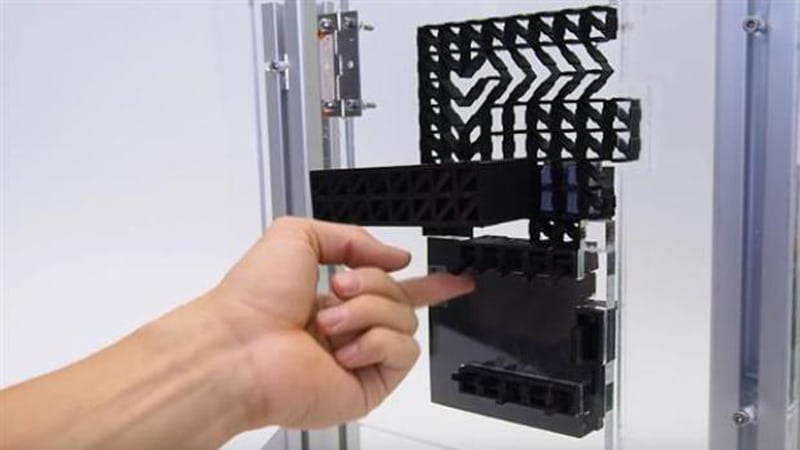A panel of specialists from the Hasso Plattner Institute in Germany has concocted a system for 3D printing “computerized mechanical metamaterials” that can be utilized to make complex gadgets, for example, mix locks. The metamaterials contain extraordinary spring-stacked cells that can trigger signs.
Back in September, we provided details regarding the work of a gathering of scientists at the Hasso Plattner Institute in Potsdam, Germany, who had built up an unbelievable 3D printing system for making mechanical structures. Their exploration included 3D printing single-part structures comprising of several interesting “cells” that would twist in exact ways when pressurized, permitting the whole printed structure to act like a multi-part mechanical gadget. One case of their work was an entryway handle and hook framework made of an adaptable plastic; when the handle of the framework was curved, the adaptable cells would disfigure in a way that moved the lock inwards, opening the entryway.
Four of the nine analysts on that venture have now come back with another exploration paper that adds a completely new component to the stunning 3D printable metamaterials initially exhibited a year ago. In particular, the scientists have presented another sort of cell that can send a computerized mechanical flag utilizing an installed bistable spring. Whenever set off, this inserted spring releases, with the subsequent motivation activating at least one neighboring cells, bringing about flag engendering. This implies 3D printed gadgets made with the uncommon metamaterials can now fuse “basic rationale capacities” notwithstanding essential mechanics. Then again, by and by: that shrewd handle and hook framework made a year ago can now be bolted and opened with a blend code.
The foundation of this new research is the supposed piece cell fused into the 3D printed metamaterial structures. These bit cells, painstakingly designed by the Hasso Plattner scientists, each contain a bistable spring, which permits them to go up against two discrete states: tense, before being activated; and casual, in the wake of being activated. Each of these phones has an info and yield port, permitting it to get and pass on the trigger flag. Orchestrating some of these bit cells in a line in this manner permits the scientists to make a flag proliferation instrument.
The analysts have shown the colossal capability of this innovation with a mix bolt, turning the handle and hook arrangement of the past venture into a bit of cutting edge apparatus. To do as such, the analysts made an intricate arrangement of 82 bit cells that can assess an inputted mix, setting off the opening component if the code is right or keeping the entryway from opening if inaccurate. “To execute rationale capacities, we have to go past only transmitting signs to likewise assessing signals, which we accomplish by blocking them,” the scientists clarify. “In the mix bolt, we piece signals for wrong digit inputs so that the entryway remains blocked.”
